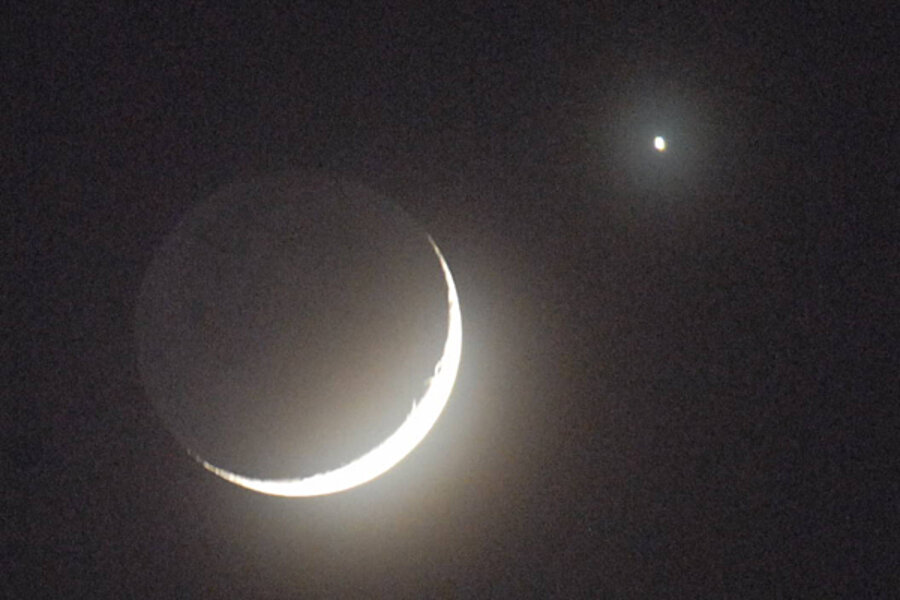Bright Venus may prompt UFO sightings
Loading...
Planetariums, observatories, weather offices and perhaps even police stations should be prepared to receive a bevy of inquiries during the next couple of weeks concerning a strange "UFO" that will soon be making appearances low in the eastern sky just before sunrise.
The unusual lateness of sunrise may add to the confusion for skywatchers, since it coincides with the sudden arrival of the bright sky apparition. But there's no need to be alarmed.
That bright light in the sky is only the planet Venus, which returns to visibility Wednesday, Nov. 3.
This sky map shows where to look to spot Venus on that date.
Venus shines bright
Venus' bright arrival comes in the midst of likely darkness for those who are heading out to work and school in the morning. [Gallery: Photos of Venus]
This is an artifact of daylight saving time . Since daylight saving time was extended into the first week of November in 2008, sunrises at this time occur later than even in the dead of winter.
Indeed, for some parts of the country, the sun doesn't rise until after 8 a.m. local time.
That means that countless millions are starting their days with the stars as their morning companion. Perhaps you've driven to work under the cover of darkness, or waited at a bus or train station and have looked around and gotten acquainted with the starry background.
If you've been glancing toward the east-southeast part of the sky, you probably haven't noticed anything particularly noteworthy or eye-catching.
Morning sky change looms
But it will all change quite suddenly on the morning of Nov. 3.
On that morning, about a half-hour before sunrise, a dazzling silvery-white star-like object will suddenly appear just above the east-southeast horizon. It's likely to take more than a few people by surprise, since it simply wasn't there on previous mornings. And, on following mornings, it will appear noticeably higher on the horizon.
This is Venus, beginning a spectacular morning apparition.
It climbs nearly 10 degrees high (a portion of the sky that can be covered by your clenched fist held at arm's length) at sunrise on Nov. 6 – the final morning of daylight saving time. Clocks will be set back one hour the following day and sunrises will come an hour earlier, but by then, Venus will be firmly established as a dazzling harbinger of sunrise.
Venus will be 20 degrees high at sunrise on Nov. 16, and 27 degrees on Nov. 25 as seen from Northern Hemisphere locations around 40 degrees north latitude.
As November ends, Venus rises a full three hours before the sun and hangs almost 30 degrees high at sunrise. Venus will brighten impressively throughout the month. For early morning commuters, who will likely wonder about this brilliant luminary bursting upon the predawn scene, Venus will no doubt call attention to itself.
Venus' quick transition
Some might wonder why Venus will become so quickly established as a dazzling morning entity compared with those occasions when it seems to take many days or weeks — sometimes even months — to transition into the evening sky.
The difference lies in Venus' position relative to the Earth. When Venus moves from the morning sky into the evening sky (called "superior conjunction") it's located on the opposite side of the sun relative to Earth.
Located at about 160 million miles from Earth on these occasions, Venus is moving at its slowest speed against the background stars. What's more, it is also moving in the same apparent direction against the stars as the sun — to the east.
So in the days leading up to and then even after superior conjunction, Venus continues to languish in the bright glare of the sun.
Finally — and very gradually — Venus moves just far enough away from the sun to be glimpsed for a short time, low near the western horizon shortly after sunset. Perhaps after a number of weeks, the planey climbs high enough to become conspicuous to all in our evening sky.
But in a morning transition, things are much different.
At inferior conjunction (which is where Venus was on Oct. 28), the planet passed between Earth and the sun. It was also only about 25 million miles from Earth – more than six times closer than it is at superior conjunction.
So Venus is moving much faster against the background stars. And, most importantly, as seen from our Earthly vantage point, the sun and Venus appear to be moving in opposite directions.
While the sun plods along toward the east, Venus is racing away to the west, which allows it to literally appear to "bolt" into the morning sky and become readily established as a predawn beacon over the span of just a week or two, as opposed to many weeks in the evening.
And lastly, because Venus is so much nearer, morning apparitions begin with the planet already near its peak brilliance.
Crescent Venus
This phase of Venus looks most remarkable through a telescope, especially early in November. Observers with optical aid will be treated to the marvel of a huge (close to an arc minute long), but wire-thin, crescent (only a few percent illuminated) when Venus is first sighted after inferior conjunction.
You can even see the crescent with 7x50 binoculars, and some folks with exceptional eyesight might even be able to perceive it without optical aid.
So if you hear about any strange UFO sightings being made in the early morning hours during the coming weeks, at least you now know what it likely is.
- Gallery - Venus Seen From Around the World
- Telescopes for Beginners
- Skywatching Tips: Observing Venus Without Staring at the Sun
Joe Rao serves as an instructor and guest lecturer at New York's Hayden Planetarium. He writes about astronomy for The New York Times and other publications, and he is also an on-camera meteorologist for News 12 Westchester, N.Y.





